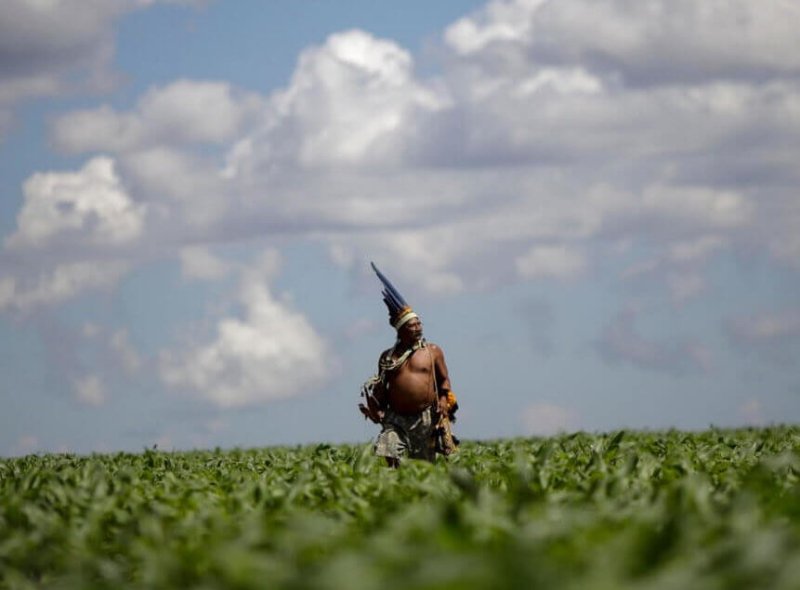The savannah scrubland where Chief João Ponce once hunted deer and wild boar in Brazil has given way to neat rows of soy and corn that a tractor sprays with herbicide. In the next field, silver grain silos shimmer in the hot sun.
Ponce is head of the Uirapuru indigenous community which has allowed local farmers to produce crops on one-third of its 44,500-acre (18,000-hectare) reservation in southwestern Mato Grosso state.
The one-tenth or less share of the harvests has helped the Pareci natives to buy cars and smartphones, replace hammocks with beds and equip their thatched huts with widescreen TVs, freezers and broadband Internet antennas.
“We’re surrounded by farmers. We can’t live off hunting anymore. The animals are gone,” he said, sitting in a hammock in his thatched hut.
But the partnership with non-native farmers, fueled by an insatiable demand for Brazilian soy in China and other markets, is illegal and has alarmed environmentalists.
Brazil’s environmental regulator Ibama … fined six native communities and a dozen farmers on reservation land for using genetically modified crops (GMO) and engaging in large-scale mechanised agriculture. Both are banned on reservation land.
The unprecedented fines totaling 129 million reais ($33 million) mark an unexpected escalation in a dispute between rival federal agencies, environmentalists, farmers and native advocacy groups over Indian tribes getting into commercial agriculture in Brazil’s rapidly expanding farm belt.
Read full, original post: Brazilian Indians fined for planting GMO soy crops































